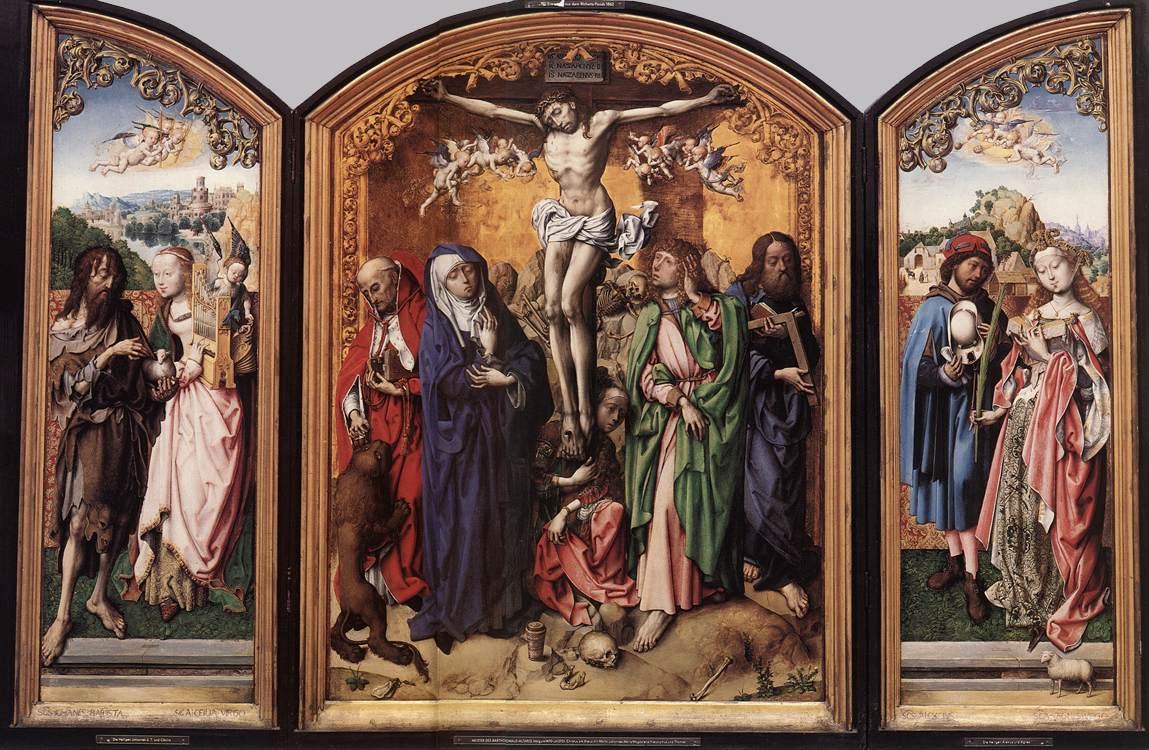Master of the St. Bartholomew Altar, Crucifixion Altarpiece

1495-1501
Oak, 107 x 80 cm (central panel), 107 x 34 cm (each wing)
Wallraf-Richartz-Museum, Cologne, Germany
As is common, a skull sits on the ground before the cross, reflecting the name of the location, "Golgotha, place of the skull." But much less common is the complete skeleton behind the cross, a symbol of the death that Christ overcomes. In a similar metaphor, the figure of Mary Magdalene emerges from the monochromy of the background with its skeleton into the full color of the foreground.
Flanking the Crucifixion scene are St. Jerome on the left (lion, red cape, church model) and St. Thomas on the right (T-square in hands). The left panel has St. John the Baptist (in animal skins, with lamb) and St. Cecilia (organ). The right panel has St. Alessio (identified by the Web Gallery of Art) and St. Agnes (lamb at feet, palm branch in right hand).
The work exemplifies the transition from the altarpieces common in the 15th century (polyptychs with gold ground and arched tops) to the style of the 16th (single-field, landscape background).
Read more about images of the Crucifixion.
Read more about images of St. John the Baptist, St. Cecilia, St. Jerome, St. Thomas, and St. Agnes.
Read more about medieval and Renaissance altarpieces.
Source: this page at Wikimedia Commons.